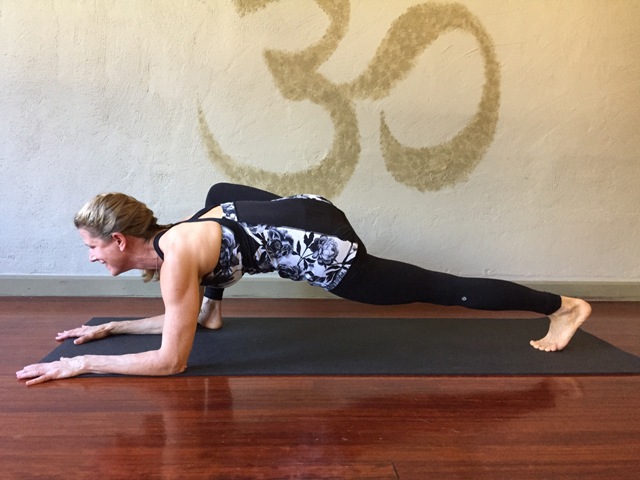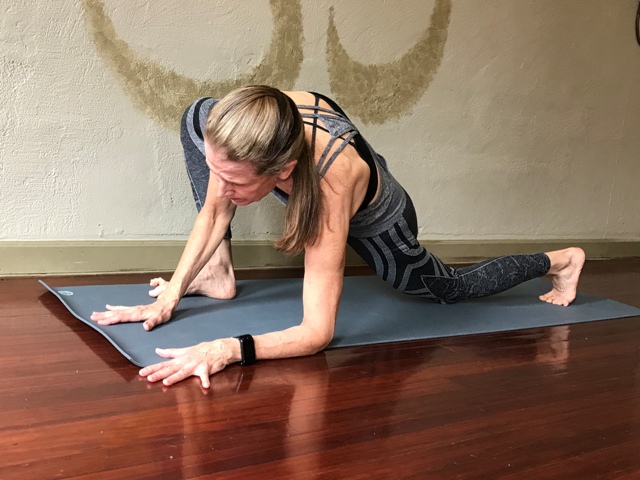Forward Bending
You will often hear me give the cue that the back of the head should be in line with the upper back when folding forward so that you are not rounding your back. Do you know what you look like when you are forward bending? It is important to see yourself when you are folding forward. Often what you feel you are doing and what actually are doing can be two very different things. You can see yourself by looking in a mirror the next time you are practicing. Or, you can enlarge a thumbnail of yourself on the screen in your next zoom class.
When forward bending it is important to move from the hips. Unfortunately, if your hamstrings are tight, you might end up bending from the waist, and/or reaching from the shoulders. These positions are especially important when we hold forward bends for a long time as in the Immune System Sequence
Let’s take a look at what this can look like in Prasarita Padottanasana, or Wide-Legged Forward Bend.
In this first picture, I am hinging from the hips and, being fairly flexible, I can place my head on the floor with my back mostly straight, there is just some slight rounding at the end of the pose.
In this next picture, I am trying to be a student with tight hamstrings and I cannot fold forward very well. You can see that I can hinge at the hips to 90 degrees, but to go any further, I am rounding my back and reaching out of my shoulders to get my hands to the floor. I am using blocks to support my head, but the back of my head is lower than my upper back. which means that my chest is collapsed and I am reaching out of my shoulders to touch the floor. My experience in this pose is that I am pretty uncomfortable.
Here is the same posture using a chair instead. While the chair might be a more appropriate prop for me, how it’s being used is not conducive to folding forward; my back is still rounded with my head lower than my upper back and I am still reaching out of my shoulders.
Check out this last picture. I am still a student with tight hamstrings, but I am using the chair appropriately. My back is straight. I have a straight line from my hips to my elbows. There is no rounding of my back. The back of my head is in line with my upper back and I am not reaching out of the shoulders. In this position I am hinging at the hips. This position looks more like the first picture of myself in the full pose. It also feels very similar as opposed to the other two which don’t feel as good.
Practicing a forward bend, or any pose, in proper alignment will take you deeper into the pose over time. This version of the pose also shows me that the student understands what is meant to be happening in the pose. In other words, it’s not important to get your hands to the floor. It is important to hinge at the hips and to keep as much of Tadasana in your posture as possible.








































